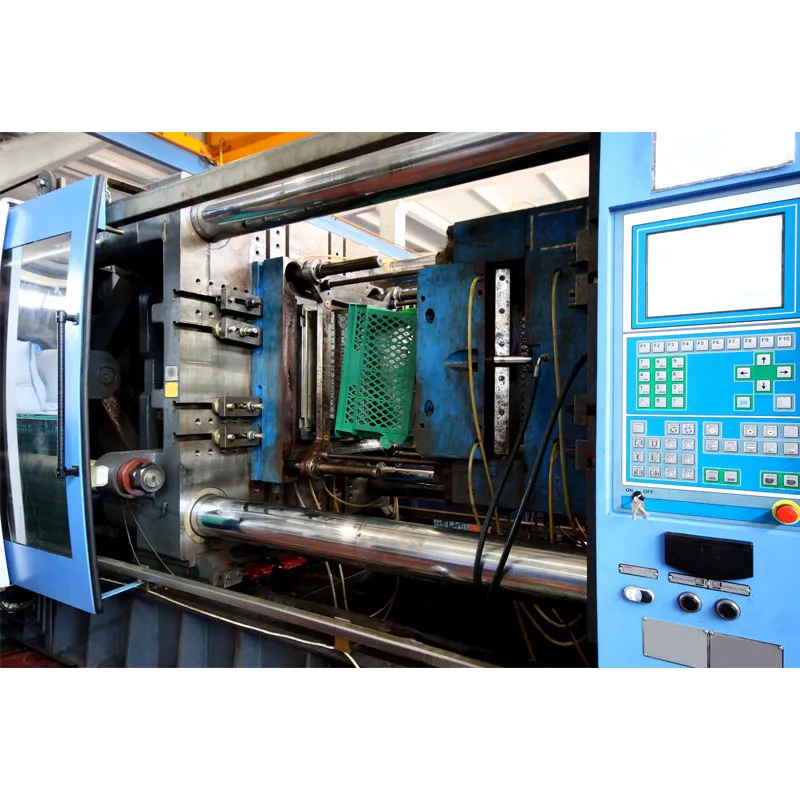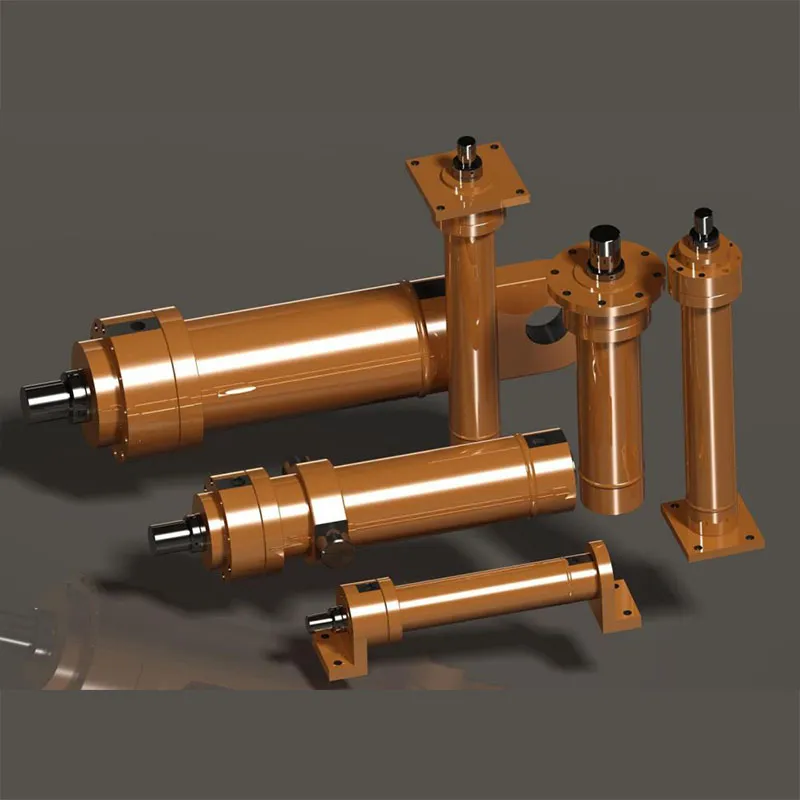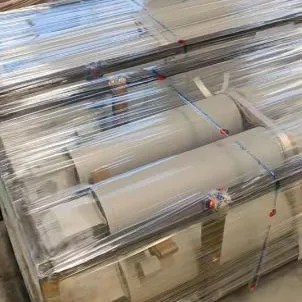- English
- Español
- Português
- русский
- Français
- 日本語
- Deutsch
- tiếng Việt
- Italiano
- Nederlands
- ภาษาไทย
- Polski
- 한국어
- Svenska
- magyar
- Malay
- বাংলা ভাষার
- Dansk
- Suomi
- हिन्दी
- Pilipino
- Türkçe
- Gaeilge
- العربية
- Indonesia
- Norsk
- تمل
- český
- ελληνικά
- український
- Javanese
- فارسی
- தமிழ்
- తెలుగు
- नेपाली
- Burmese
- български
- ລາວ
- Latine
- Қазақша
- Euskal
- Azərbaycan
- Slovenský jazyk
- Македонски
- Lietuvos
- Eesti Keel
- Română
- Slovenski
- मराठी
- Srpski језик
What are the diagnostic methods for hydraulic cylinder faults?
2024-09-30
A hydraulic cylinder is an executing element in a hydraulic system that converts hydraulic energy into mechanical energy. Its faults can be basically summarized as hydraulic cylinder misoperation, inability to push the load, and piston slip or crawling. The phenomenon of equipment shutdown caused by hydraulic cylinder failure is not uncommon, therefore, the fault diagnosis and maintenance of hydraulic cylinders should be taken seriously.
Fault diagnosis and handling
1. Mistake or malfunction of action
There are several reasons and solutions as follows:
(1) The valve core is stuck or the valve hole is blocked. When the flow valve or directional valve core is stuck or the valve hole is blocked, the hydraulic cylinder is prone to misoperation or malfunction. At this time, the contamination of the oil should be checked; Check if dirt or gum deposits are stuck in the valve core or blocking the valve hole; Check the wear of the valve body, clean and replace the system filter, clean the oil tank, and replace the hydraulic medium.
(2) The piston rod is stuck with the cylinder or the hydraulic cylinder is blocked. At this point, no matter how you manipulate it, the hydraulic cylinder will not move or move very little. At this point, it is necessary to check whether the piston and piston rod seals are too tight, whether dirt and gum deposits have entered, whether the axis of the piston rod and cylinder is aligned, whether vulnerable parts and seals have failed, and whether the load carried is too high.
(3) The hydraulic system control pressure is too low. The throttling resistance in the control pipeline may be too high, the flow valve may be improperly adjusted, the control pressure may be inappropriate, and the pressure source may be disturbed. At this point, the control pressure source should be checked to ensure that the pressure is adjusted to the specified value of the system.
(4) Air enters the hydraulic system. Mainly due to leaks occurring in the system. At this time, it is necessary to check the liquid level of the hydraulic oil tank, the seals and pipe joints on the suction side of the hydraulic pump, and whether the suction coarse filter is too dirty. If so, hydraulic oil should be replenished, seals and pipe joints should be treated, and the coarse filter element should be cleaned or replaced.
(5) The initial movement of the hydraulic cylinder is slow. At low temperatures, hydraulic oil has high viscosity and poor fluidity, resulting in slow hydraulic cylinder movement. The improvement method is to replace the hydraulic oil with better viscosity and temperature performance. At low temperatures, a heater or the machine itself can be used to heat up the oil temperature during startup. The normal operating oil temperature of the system should be maintained at around 40 ℃.
2. Cannot drive load during operation
The main manifestations include inaccurate piston rod positioning, insufficient thrust, decreased speed, unstable operation, etc. The reasons are:
(1) Internal leakage of hydraulic cylinder. Internal leakage of hydraulic cylinders includes leakage caused by excessive wear of the hydraulic cylinder body seal, piston rod and seal cover seal, and piston seal.
The reason for the leakage of the piston rod and sealing cover seal is due to the wrinkling, squeezing, tearing, wear, aging, deterioration, deformation, etc. of the seal. At this time, a new seal should be replaced.
The main reasons for excessive wear of piston seals are improper adjustment of the speed control valve, resulting in excessive back pressure and improper installation of seals or hydraulic oil contamination. Secondly, there are foreign objects entering during assembly and poor quality of sealing materials. The consequence is slow and powerless movement, and in severe cases, it can also cause damage to the piston and cylinder, resulting in the phenomenon of "pulling the cylinder". The solution is to adjust the speed control valve and make necessary operations and improvements according to the installation instructions.
(2) Hydraulic circuit leakage. Including leaks in valves and hydraulic pipelines. The maintenance method is to operate the directional valve to check and eliminate leaks in the hydraulic connection pipeline.
(3) The hydraulic oil is bypassed back to the oil tank through the overflow valve. If the overflow valve gets stuck in the valve core due to dirt, causing the overflow valve to remain open, hydraulic oil will bypass the overflow valve and flow directly back to the oil tank, resulting in no oil entering the hydraulic cylinder. If the load is too large, although the regulating pressure of the relief valve has reached the maximum rated value, the hydraulic cylinder still cannot obtain the thrust required for continuous operation and does not move. If the adjustment pressure is low, it will not reach the required vertebral force due to insufficient pressure, resulting in insufficient thrust. At this time, the overflow valve should be checked and adjusted.
3. Piston slippage or crawling
Sliding or crawling of the hydraulic cylinder piston will cause unstable operation of the hydraulic cylinder. The main reasons are as follows:
(1) Hydraulic cylinder internal stagnation. Improper assembly, deformation, wear, or out of tolerance of the internal components of the hydraulic cylinder, coupled with excessive resistance to movement, can cause the piston speed of the hydraulic cylinder to change with different stroke positions, resulting in slippage or crawling. Most of the reasons are due to poor assembly quality of the parts, surface scratches or iron filings generated by sintering, which increase resistance and decrease speed. For example, the piston and piston rod are not concentric or the piston rod is bent, the hydraulic cylinder or piston rod is offset from the guide rail installation position, and the sealing ring is installed too tightly or too loosely. The solution is to repair or adjust again, replace damaged parts, and remove iron filings.
(2) Poor lubrication or excessive machining of hydraulic cylinder aperture. Due to the relative motion between the piston and cylinder barrel, guide rail and piston rod, poor lubrication or hydraulic cylinder bore diameter deviation can exacerbate wear and reduce the straightness of the cylinder barrel centerline. In this way, when the piston works inside the hydraulic cylinder, the frictional resistance will vary, resulting in slippage or crawling. The elimination method is to first grind the hydraulic cylinder, then prepare the piston according to the matching requirements, grind the piston rod, and configure the guide sleeve.
(3) The hydraulic pump or cylinder enters the air. Air compression or expansion can cause piston slippage or crawling. The elimination measure is to check the hydraulic pump, set up a specialized exhaust device, and quickly operate the full stroke back and forth several times to exhaust.
(4) The quality of seals is directly related to slippage or crawling. When used under low pressure, O-ring seals are more prone to sliding or crawling compared to U-shaped seals due to their higher surface pressure and greater difference in dynamic and static friction resistance; The surface pressure of the U-shaped sealing ring increases with the increase of pressure. Although the sealing effect also improves accordingly, the difference in dynamic and static friction resistance also increases, and the internal pressure increases, affecting the elasticity of the rubber. Due to the increased contact resistance of the lip, the sealing ring will tilt and the lip will elongate, which is also prone to sliding or crawling. To prevent it from tilting, a supporting ring can be used to maintain its stability.
4. The adverse consequences and rapid repair methods of scratches on the surface of the inner hole of the hydraulic cylinder body
① The material debris squeezed out of the scratched groove may embed into the seal, causing damage to the working part of the seal during operation and potentially creating new scratch areas.
② Deteriorating the surface roughness of the inner wall of the cylinder, increasing friction, and easily causing crawling phenomenon.
③ Intensify the internal leakage of the hydraulic cylinder and reduce its working efficiency. The main reasons for scratches on the surface of the cylinder bore are as follows:
(1) Scars caused during the assembly of hydraulic cylinders
① Foreign objects mixed in during assembly can cause damage to the hydraulic cylinder. Before final assembly, all parts must be thoroughly deburred and cleaned. When installing parts with burrs or dirt, foreign objects can easily enter the cylinder wall surface due to "friction" and the weight of the parts, causing damage.
② When installing hydraulic cylinders, the piston and cylinder head are of large mass, size, and inertia. Even with the assistance of lifting equipment for installation, due to the small clearance required for fitting, they will be forcefully inserted no matter what. Therefore, when the end of the piston or the cylinder head boss collides with the inner surface of the cylinder wall, it is extremely easy to cause scratches. The solution to this problem is to use a specialized assembly guide tool during installation for small products with large quantities and batch sizes; For heavy, coarse, and large hydraulic cylinders, only meticulous and cautious operation can be avoided as much as possible.
③ The scratches caused by measuring instrument contacts are usually measured using an inside micrometer to measure the inner diameter of the cylinder body. The measuring contacts are inserted into the inner wall of the cylinder body while rubbing, and are mostly made of high hardness wear-resistant hard alloy. Generally speaking, scratches with small depth caused by slender shapes during measurement are minor and do not affect operational accuracy. However, if the size of the measuring rod head is not adjusted properly and the measuring contact is hard embedded, it can cause more severe scratches. The solution to this problem is to first measure the length of the adjusted measuring head. In addition, use a paper tape with holes only at the measuring position and stick it to the inner surface of the cylinder wall, so as not to produce scratches in the above shape. Minor scratches caused by measurement can generally be wiped off with the back of an old sandpaper or horse manure paper.
(2) Minor signs of wear and tear during operation
① The transfer of scars on the sliding surface of the piston. Before the installation of the piston, there are scars on its sliding surface that have not been treated and installed intact. These scars will in turn scratch the inner surface of the cylinder wall. Therefore, before installation, these scars must be adequately repaired.
② The sintering phenomenon caused by excessive pressure on the sliding surface of the piston is due to the tilting of the piston caused by the self weight of the piston rod, resulting in a phenomenon of friction, or due to the increase in pressure on the sliding surface of the piston caused by lateral loads, which will cause sintering. When designing a hydraulic cylinder, it is necessary to study its working conditions and pay full attention to the length and clearance dimensions of the piston and liner.
③ The peeling of the hard chromium layer on the surface of the cylinder body is generally believed to be caused by the following reasons.
a. The adhesion of the electroplating layer is poor. The main reason for poor adhesion of electroplated layers is insufficient degreasing treatment of the parts before electroplating; The surface activation treatment of the parts is not thorough, and the oxide film layer has not been removed.
b. Hard layer wear. The wear of electroplated hard chromium layer is mostly caused by the friction of the piston and the grinding effect of iron powder. When there is moisture in the middle, the wear is faster. Corrosion caused by the difference in contact potential of metals only occurs at the parts where the piston comes into contact, and corrosion occurs in a point like manner. Similarly to the above, the presence of moisture in the middle can promote the development of corrosion. Compared with castings, the contact potential difference of copper alloys is higher, so the corrosion degree of copper alloys is more severe.
c. Corrosion caused by contact potential difference. Corrosion caused by contact potential difference is less likely to occur for hydraulic cylinders that operate for a long time; For hydraulic cylinders that are not used for a long time, it is a common malfunction.
④ The piston ring is damaged during operation, and its fragments are trapped in the sliding part of the piston, causing scratches.
⑤ The material of the sliding part of the piston is sintered and cast, which will cause sintering phenomenon when subjected to large lateral loads. In this case, the sliding part of the piston should be made of copper alloy or welded with such materials.
(3) There are foreign objects mixed in the cylinder body
The most problematic issue in hydraulic cylinder malfunctions is the difficulty in determining when foreign objects entered the cylinder. After foreign objects enter, if a sealing element with a lip is installed on the outer side of the sliding surface of the piston, the lip of the sealing element can scrape the foreign object during operation, which is beneficial for avoiding scratches. However, the piston with O-ring seals has sliding surfaces at both ends, and foreign objects are trapped between these sliding surfaces, which can easily form scars.
There are several ways for foreign objects to enter the cylinder:
① Foreign objects entering the cylinder
a. Due to not paying attention to keeping the oil port open during storage, it will create conditions for constantly receiving foreign objects, which is absolutely not allowed. Rust proof oil or working fluid must be injected and plugged during storage.
b. Foreign objects enter during cylinder installation. The place where installation operations are carried out has poor conditions, and foreign objects can enter unconsciously. Therefore, the surrounding area of the installation site must be cleaned up, especially the place where the parts are placed must be cleaned thoroughly to avoid any dirt.
c. There are "burrs" on the parts or insufficient cleaning. There are often burrs left during drilling in the oil port or buffer device on the cylinder head, which should be noted and removed by sanding before installation.
② Foreign objects generated during operation
a. Friction iron powder or iron filings formed due to the force of the buffer column plug. When the clearance of the buffer device is small and the lateral load on the piston rod is large, it may cause sintering phenomenon. These frictional iron powders or metal fragments that have fallen off due to sintering will remain in the cylinder.
b. Scars on the inner surface of the cylinder wall. The high pressure on the sliding surface of the piston causes sintering, resulting in surface cracking of the cylinder body. The metal that has been squeezed falls off and remains in the cylinder, causing scratches.
③ There are various situations where foreign objects enter through pipelines.
a. Not paying attention during cleaning. After the pipeline is installed and cleaned, it should not pass through the cylinder block. A bypass pipeline must be installed in front of the oil port of the cylinder block. This is very important. Otherwise, foreign objects in the pipeline will enter the cylinder, and once they enter, they will be difficult to remove and instead become transported into the cylinder. Furthermore, when cleaning, it is necessary to consider the method of removing foreign objects that may enter during pipeline installation operations. In addition, acid washing and other procedures should be carried out before pipeline installation to completely remove corrosion inside the pipe.
b. Chips formed during pipe processing. After the pipe is cut to length, there should be no residue during the deburring operation at both ends. Furthermore, placing steel pipes near the site where welding pipeline operations are carried out is the cause of foreign objects mixing in during welding. Pipes placed near the welding operation site must have their openings sealed. It must also be noted that the pipe fitting materials should be fully prepared on a dust-free workbench.
c. The sealing tape enters the cylinder. As a simple sealing material, polytetrafluoroethylene plastic sealing tape is often used in installation and inspection. If the winding method of linear and strip-shaped sealing materials is not correct, the sealing tape will be cut off and enter the cylinder. The sealing element with a strip shape will not have any impact on the winding of the sliding part, but it may cause the one-way valve of the cylinder to malfunction or the buffer regulating valve to not be fully adjusted; For the circuit, it may cause malfunction of the reversing valve, overflow valve, and pressure reducing valve.
The traditional repair method is to disassemble and outsource the damaged components for repair, or to perform brush plating or overall surface scraping. The repair cycle for hydraulic cylinder body scratches is long and the repair cost is high.
Repair process:
1. Bake the scratched area with an oxygen acetylene flame (control the temperature and avoid surface annealing), and remove the oil that has been seeping through the metal surface for years until there are no sparks splashing around.
2. Use an angle grinder to surface treat the scratched area, polish to a depth of at least 1 millimeter, and create grooves along the guide rail, preferably dovetail grooves. Drill deeper holes at both ends of the scratch to change the stress situation.
3. Clean the surface with degreased cotton dipped in acetone or anhydrous ethanol.
4. Apply metal repair materials to the scratched surface; The first layer should be thin, evenly and completely covering the scratched surface to ensure the best adhesion between the material and the metal surface. Then, apply the material to the entire repair area and press it repeatedly to ensure that the material is filled and reaches the required thickness, slightly higher than the surface of the guide rail.
5. It takes 24 hours for the material to fully achieve all its properties at 24 ℃. To save time, the temperature can be increased using a tungsten halogen lamp. For every 11 ℃ increase in temperature, the curing time is reduced by half. The optimal curing temperature is 70 ℃.
6. After the material solidifies, use a fine grinding stone or scraper to repair and level the material above the surface of the guide rail, and the construction is completed.







